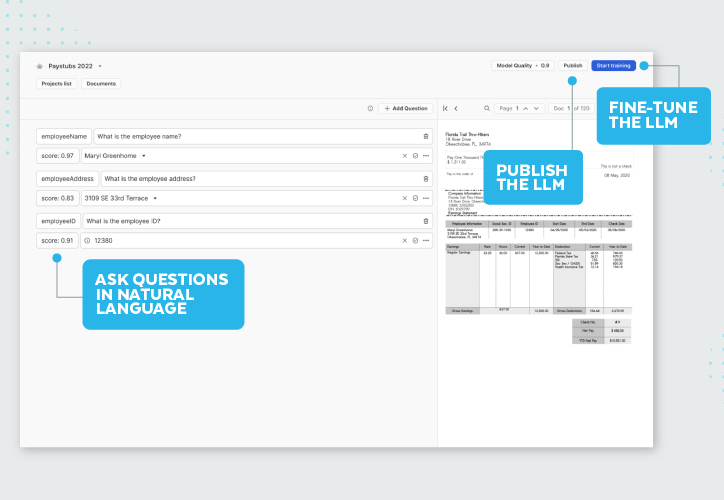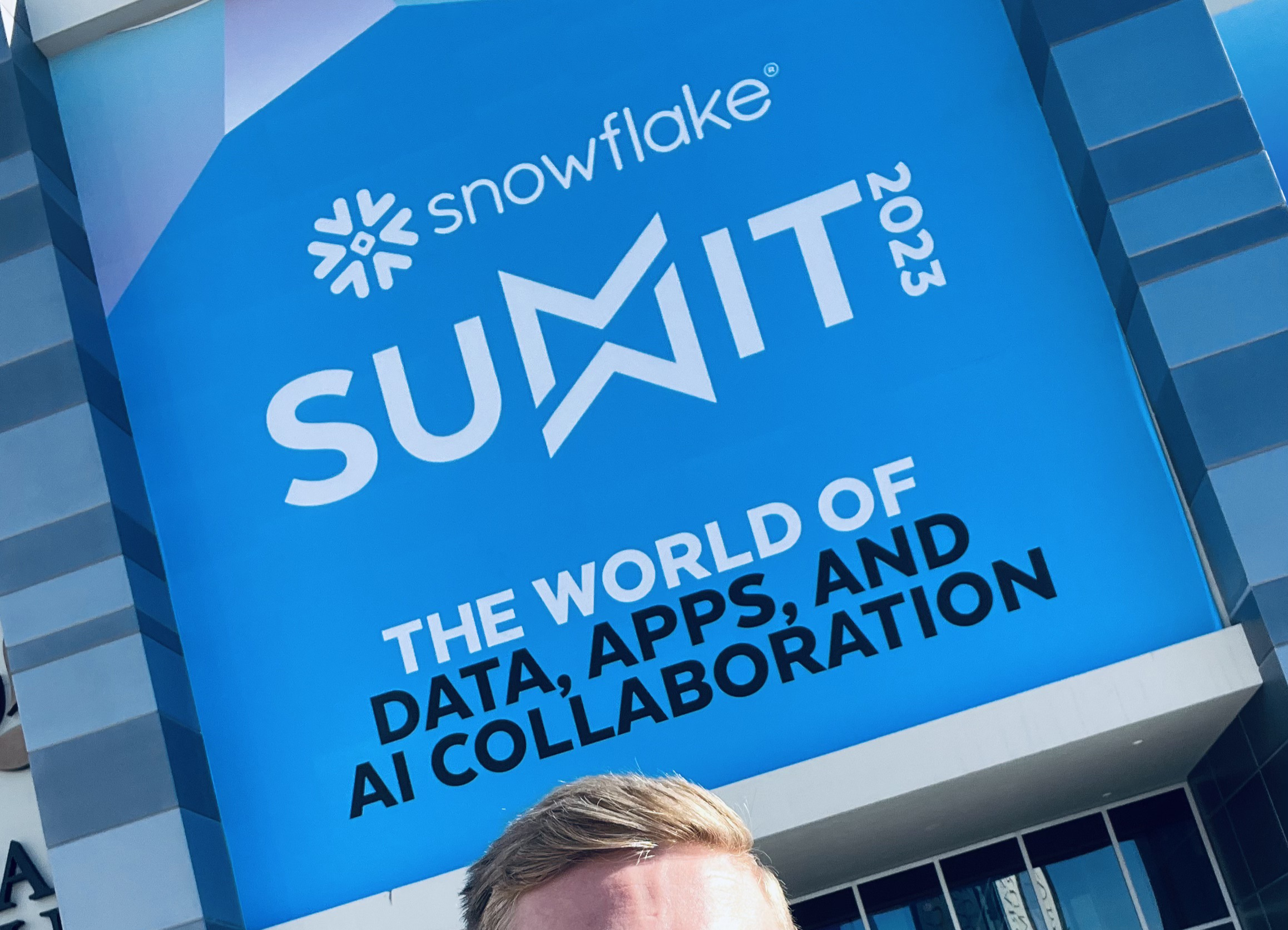#6 How Swiss Manufacturers Streamline Operations with Snowflake’s DocumentAI
In the fast-paced world of Swiss manufacturing and supply chain companies, efficiently managing and extracting insights from vast amounts of data, especially unstructured data, such as documents or hand-filled forms, has been a persistent challenge. However, a groundbreaking solution has emerged to address this very obstacle: DocumentAI, Snowflake’s latest innovation.
With native LLMs (Large Language Models) seamlessly integrated into the Snowflake platform, DocumentAI empowers companies in Switzerland’s manufacturing and supply chain sector to gain a deeper understanding of their data, boost productivity, and unlock valuable insights. From effortlessly extracting crucial information from documents to enhancing decision-making processes, this powerful tool offers new possibilities for driving efficiency and success in a highly competitive industry. In this blog post, we delve into the transformative potential of DocumentAI, exploring how it can revolutionise the way businesses harness the power of their unstructured data and pave the way for a more streamlined and agile future. Let’s embark on this exciting journey and discover how DocumentAI is set to make a significant impact on the manufacturing and supply chain landscape in Switzerland.
About Snowflake
For those in the manufacturing industry who are unfamiliar, Snowflake is a pioneering cloud-based data technology company. In simple terms, it offers a platform that revolutionises how businesses manage their data. With Snowflake’s Manufacturing Data Cloud, manufacturing companies can store, process, and analyse vast amounts of data efficiently and securely. It’s like having a reliable and scalable data partner that empowers businesses to make informed decisions, drive innovation, and streamline their operations. Snowflake’s cutting-edge approach to cloud computing opens up new possibilities for manufacturers to leverage the full potential of their data, paving the way for a more agile and data-driven future.
DocumentAI – How it Works
With its latest release in generative AI, Snowflake has found a way to simplify the analysis of unstructured data significantly. DocumentAI will be available natively inside the platform. That means, every Snowflake customer will be able to leverage it as part of their existing subscription at no extra cost. However, you have to be aware of how it works under the hood as increased usage might have an impact on your consumption cost. Let’s dive into it.

- First, you create a new machine learning project in Snowflake and upload the documents that you want to analyze to store them in a Snowflake database. Snowflake can easily handle unstructured data – more information about that can be found here.
- Then, you can already start asking questions about the document (see left-hand side in the screenshot above). You will see the results showing up in milliseconds alongside with a confidence score.
- You can zip through the documents and check the generated answers for every document. If an answer is incorrect, you can let Snowflake know by clicking the ‘X’ next to the answer. Under the hood, this machine learning process is called ‘Reinforcement Learning from Human Feedback’. After having validated a few answers, you can retrain the model in Snowflake by clicking on the ‘Start Training’ button in the top right corner.
- Ultimately, if you’re happy with the results, you can publish the model (see button in the top right corner next to the Start Training button). This makes the model available to other users that you assign the right permissions to.
Lastly, you can leverage alerting functionality to notify certain users once a particular rule has been fulfilled by a document. Thereby, the process from machine inspection to preventive action becomes significantly faster, resulting in reduced numbers of errors, lower cost, higher quality, less accidents and more.
Three Ideas for Gaining a Competitive Advantage with DocumentAI and LLMs
The obvious question is, how can companies in the manufacturing and supply chain industry leverage these technology advancements to gain a competitive advantage? Here are three smart application areas that you should consider:
Enhanced Quality Control and Product Inspection
Large language models (LLMs) and Snowflake’s DocumentAI feature offer the manufacturing industry an array of intelligent applications, particularly in quality control and product inspection processes. By leveraging LLMs, manufacturers can analyse vast amounts of text data from product specifications, manuals, and customer feedback to identify patterns and potential issues. This enables them to detect defects, anticipate product failures, and improve overall product quality. With DocumentAI, companies can automate the extraction of critical information from various documents, such as inspection reports or supplier certificates. This streamlines the data collection process, allowing manufacturers to make real-time, data-driven decisions to ensure quality standards are met and maintain consistent product excellence.
Optimised Supply Chain Management
Manufacturing businesses heavily rely on efficient supply chain management to ensure timely delivery of materials and products. Large language models in conjunction with Snowflake’s DocumentAI offer sophisticated applications for optimising supply chain operations. Companies can use LLMs to analyse unstructured data from supplier agreements, contracts, and logistics documents to gain insights into supplier performance, track inventory levels, and identify potential bottlenecks in the supply chain. DocumentAI enables automatic data extraction from invoices, purchase orders, and shipping documents, enabling smoother data integration and facilitating faster decision-making processes. This heightened visibility and enhanced data-driven approach empower manufacturers to make strategic adjustments, streamline logistics, and ultimately reduce costs while improving overall supply chain efficiency.
Predictive Maintenance and Equipment Optimisation
The manufacturing industry can significantly benefit from large language models and DocumentAI in the realm of predictive maintenance and equipment optimisation. By utilising LLMs, manufacturers can analyse historical maintenance data, sensor readings, and equipment manuals to predict potential failures and determine optimal maintenance schedules. This predictive maintenance approach reduces downtime and extends the lifespan of machinery and equipment. Additionally, DocumentAI’s capabilities come into play when extracting relevant insights from maintenance reports and equipment manuals. By aggregating and analysing data, manufacturers can fine-tune maintenance strategies, minimise disruptions, and achieve higher levels of productivity while maximising the utilisation of their assets.
Conclusion
In conclusion, large language models and Snowflake’s DocumentAI feature present the manufacturing industry with transformative opportunities. From enhancing quality control processes to optimising supply chain management and implementing predictive maintenance, these technologies enable manufacturers to unlock new levels of efficiency, productivity, and innovation. By harnessing the power of these intelligent applications, manufacturing companies in Switzerland can position themselves as pioneers in an increasingly data-driven and competitive landscape.
For a more holistic view on building the smart factory of the future, I recommend reading the latest whitepaper by Swisscom – here.
If you are interested in other Snowflake feature announcements, read from my previous blog post here.



